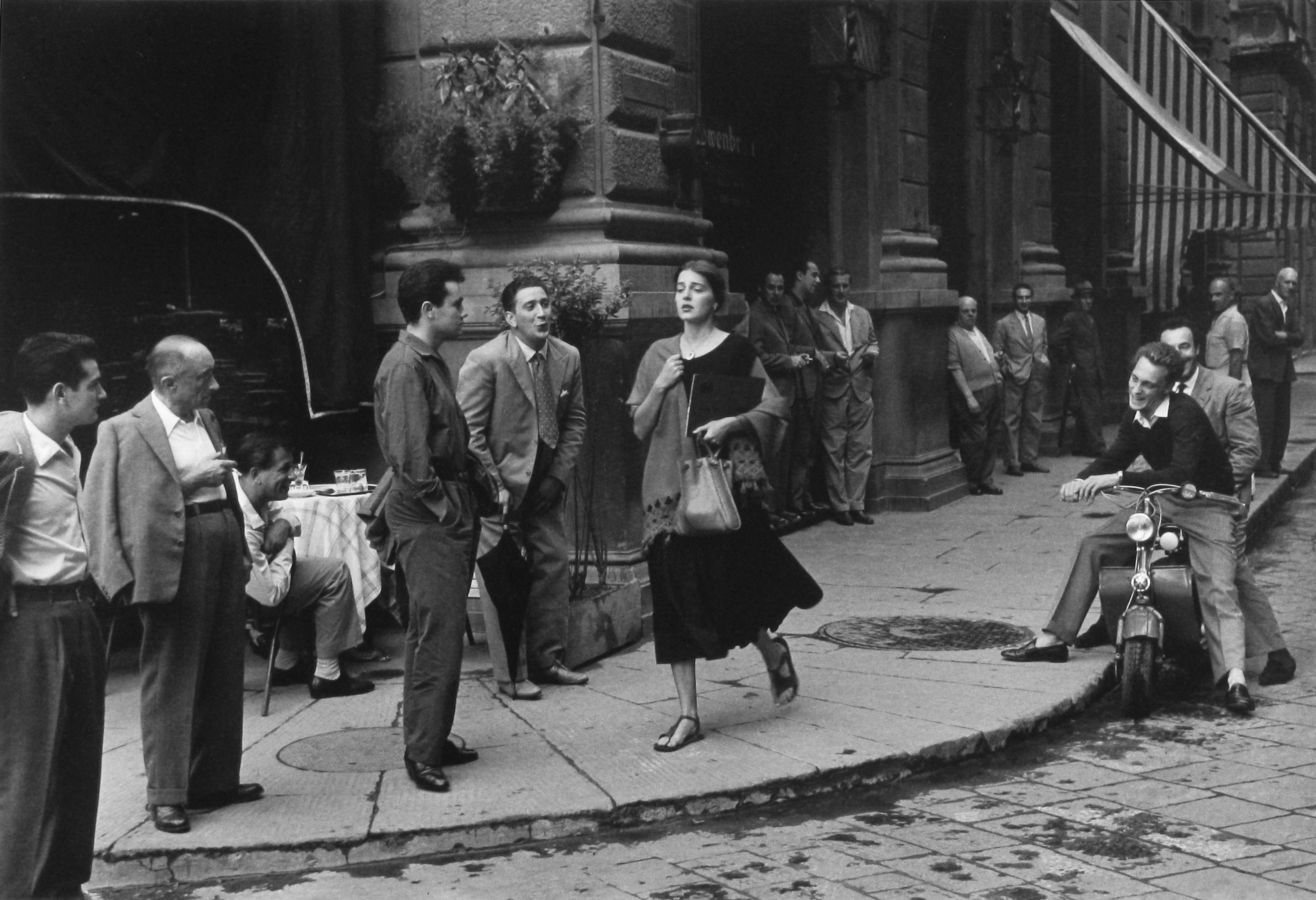
Image Credit: ‘American Girl in Italy,” Ruth Orkin, 1951
MISOGYNY IS A DAILY REALITY FOR WOMEN, which often presents itself in a common, widely-accepted form of violence — sexual harassment. Sexual harassment occurs in public spaces every day, in many places including parking lots, shopping centers, schools, parks, and the street. The way it looks and sounds varies as much as harassers, ranging from whistles and phrases like “Hey, baby!” to groping and explicit threats.
What is Street Harassment?
Stop Street Harassment states the following as its working definition of street harassment:
“Gender-based street harassment is unwanted comments, gestures, and actions forced on a stranger in a public place without their consent and is directed at them because of their actual or perceived sex, gender, gender expression, or sexual orientation.”
Whom Does Street Harassment Affect?
Street harassment disproportionately affects women, people of color, LGBT+ people, and differently-abled people. Higher rates of street harassment are reported in densely populated areas, and by people who walk, cycle, or use public transportation. It is rarely reported to authorities, though people often share their stories in private conversations and on social media. In recent research, more than one-third of women in the U.S. reported that their first experience of street harassment was before the age of 13.
How Can We Respond to Street Harassment?
In Creeps on the Street, Laci Green gives examples of a few types of responses you can use or adapt in responding to street harassment. It is important to assess your safety before choosing how you will respond. In some cases, you may find it best to walk away. In others, it may be safe to name the behavior, letting harassers know what they’re doing is not cute or funny, and it has a name they probably won’t like. For some, power is reclaimed by responding in kind:
“Hey, Mama!”
“Hey, Grandpa.”
In many situations, people are already in a rush, and simply want to get where they’re going, but want to acknowledge what happened and their feelings about it. In this case, you can go back to the spot where it happened and write in chalk “I was harassed here,” or post on social media to let your friends know what happened and how you felt, or share your story on Stop Street Harassment or Hollaback!.
Recently, a video [NSFW] recorded and posted by a woman who caught a man masturbating on the train while watching her went viral. Sitting across from him on a full train, she loudly rebuked him, naming his behavior for everyone to hear. She demanded that he get off the train at the next stop. Seemingly shocked that he was caught and being called out, he quickly got up and exited the train at the next stop as he was told.
Is There Research on Street Harassment?
In 2014, Cornell University and Hollaback! — a non-profit organization based in New York and global movement to end street harassment — conducted an international research survey on street harassment engaging over 16,000 respondents from 42 cities. Over 50% of respondents have been fondled or groped, and 71% have been followed. It has been proven, through research studies like this one and story-sharing apps and campaigns, that street harassment exists everywhere. It is not caused by the people experiencing it, and has a wide range of effects including feelings of anger and anxiety. Street harassment can also heavily impact everyday decision like clothing, where people go, and routes they take. Stop Street Harassment has a wealth of information and statistics collected through community studies and online surveys.
What Can Bystanders Do?
When a person experiences street harassment, it can be more upsetting when there are witnesses who do not offer support. There are many ways to support a person who is being harassed, and they are often divided into four categories:
Direct: Step in and confront the harasser.
“Hey! Leave her alone.”
“This is inappropriate. Stop.”
“You need to leave.”
Distract: Shift the focus from the person being harassed to yourself or another object so the person being harassed can escape.
“Hey, what time is it?”
“Where can I get the #20 bus?”
“Excuse me, how do I get to the movie theater from here?”
Delegate: Involve other people in deescalating the situation. This could mean calling a security guard, police officer, or manager, or getting other passersby to help you.
“Hey, this guy is harassing a student. Help me stop him!”
“There are two people having an argument in aisle three. It looks like one of them followed the other, and she’s uncomfortable. Can you take care of it?”
Delay: Check in with the person who was harassed. Offer to help in any way you can, and let them know about any resources you have access to that they could use — like the Hollaback! app.
“Are you okay?”
“Can I do anything to help you?”
“I saw what just happened. That wasn’t okay, and I’m sorry it happened to you.”
“If you want to share your story, here are some websites and apps you can check out.”
Street harassment is often given cute names like cat-calling and Eve-teasing, but it is an act of violence, perpetrated against marginalized people, and perpetuated by the people who see it and remain silent. You have the right and the freedom to safely holla-back or intervene, helping to end street harassment.
















